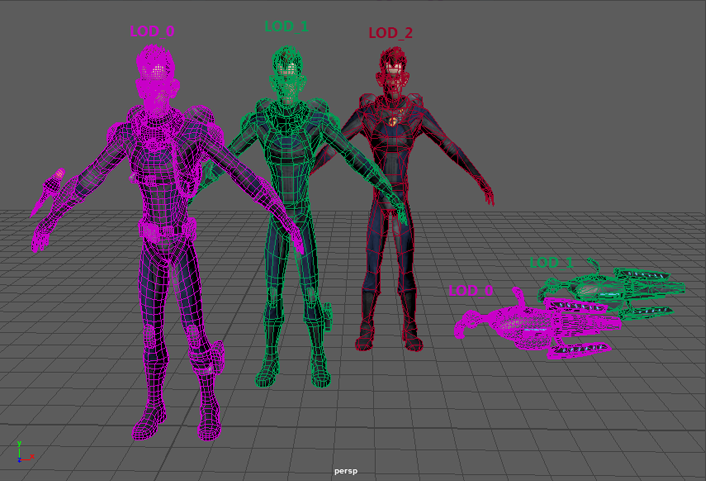Lets you associate multiple versions of the same geometry to be replaced in a game engine based on a certain threshold value. This lets you produce a high-quality version of a model for up close and a low-quality version for far away, with multiple versions in between.
At any given time, the LOD group makes it easy to display the appropriate version of the geometry (one child of the level of detail group), depending on either the group’s distance to a camera, or a percentage of screen height.
The following image shows the geometry separated so you can see the resolution differences. Typically your LOD grouped geometries will be stacked exactly on top of one another so that switching from one LOD level to the next occurs seamlessly. For testing purposes, you can temporarily set levels to always display. See Test or preview LODs.

Known Limitations with LODs
- Level of Detail does not handle instances. Use only uninstanced geometry when creating levels of detail. (Instanced geometry isn't displayed consistently when added into a Level of Detail group.)
- Don't use Edit > Ungroup on Level of Detail groups; the LOD threshold information isn't reset properly on Undo. Use Edit > Level of Detail > Ungroup to properly ungroup an lodGroup node.
- Level of Detail does not handle hierarchies. To generate lower resolution meshes from multiple meshes at the same time, each selected mesh must be the unique child of a top-level transform. For example, the two meshes in this example have to be removed from the group node before generating LOD meshes.
